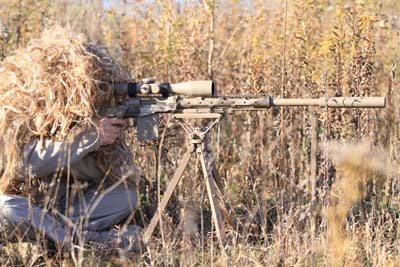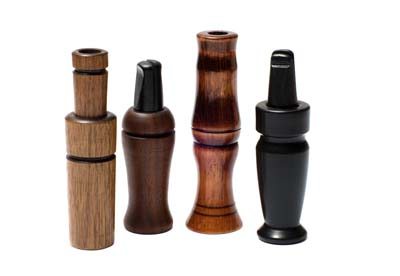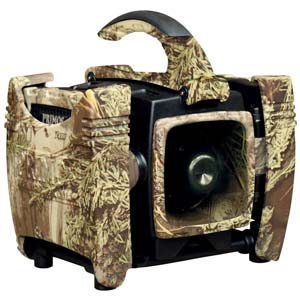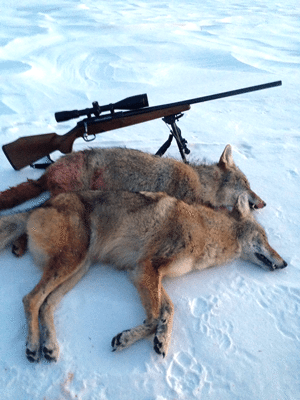If you want to become a good coyote hunter, you need to know that it takes a lot of practice, patience and research. You won’t become a good one overnight, it takes time to learn all the tips and tricks that will turn you into an efficient hunter. But, you also have to remember one thing - although you will read lots of books and info or see lots of videos on the Internet about coyote hunting, all this will never replace experiencing the real thing. You have to see it for yourself in order to comprehend the entire activity. Without the real experience, the research is useless.
First of all, lets delve into the debate topic of equipment, which is one of the most important parts when it comes down to coyote hunting. Every coyote hunter will switch a lot of equipment until they find what’s suitable for them. Basically, it depends on each and every person. Not all people are the same, so some will prefer one type of equipment while others prefer a different one. Usually, first time coyote hunters need to start with a rifle.
 Choosing a rifle depends on the area where you will do your hunting. If you are planning to hunt in a wide-open area, then you should search for the flattest cartridge available that could reach a respectable distance of about 300 yards. Experienced hunters affirm that the .220 Swift is a good option for this type of hunting. Other hunters say that the Remington 700VS is the perfect rifle. Of course, choosing a rifle depends a lot on the available budget, but if you know where to look, you will find the best compromise. Stop in and visit the experts at your local Sportsman’s Warehouse and tap into their local knowledge.
Choosing a rifle depends on the area where you will do your hunting. If you are planning to hunt in a wide-open area, then you should search for the flattest cartridge available that could reach a respectable distance of about 300 yards. Experienced hunters affirm that the .220 Swift is a good option for this type of hunting. Other hunters say that the Remington 700VS is the perfect rifle. Of course, choosing a rifle depends a lot on the available budget, but if you know where to look, you will find the best compromise. Stop in and visit the experts at your local Sportsman’s Warehouse and tap into their local knowledge.When choosing a rifle. you have to take into consideration that the coyote is a very clever animal, in fact almost stubborn when it comes down to survival, so don’t make a mistake by choosing a rifle which has unknown capabilities just to save a few dollars. If you plan to be efficient, then you need to get the right tools. Many coyote hunters say that the most efficient rounds are between the .222 and 6mm Remington. Once you have purchased a rifle, give it a chance to perform. If you are not impressed immediately, give it a few more shots. Most problems don’t just lie with the firearm you have chosen. As they say, “practice makes perfect”. You need to put in the time to become one with your gun!
Many hunters also like to carry a shotgun for those, “up close and personal” shots. This isn’t a bad idea in many cases. If you are fortunate enough to bring a dog right to your setup, there are times when it is tough to pick him up in your scope. If you are able to switch from your rifle to your shotgun without being detected, the wider pattern that a shotgun provides can certainly be the determining factor for success.

Calls are also a very important aspect that you have to take into consideration before you begin your hunting adventure. For beginners, it is advisable to use a closed reed model. Many of these models come pre-tuned and will automatically give the needed cries and screams. You will find that it takes a little practice in order to handle them efficiently, but once you have done so, you will be able to make a wide variety of sounds which are more suitable in pressured areas. The market is full of models from which you can choose.
 Another popular choice today is to purchase an electronic call. There are several models to choose from that you will find at Sportsman’s Warehouse. The really good ones are not cheap, but in my opinion, worth their weight in gold. Because they come with remote controls you are able to set-up away from where the sound is coming and as the dog comes in, he will be looking at the sound and not at you. They also allow you to change back and forth between several sounds from a howling pack to a rabbit in distress, so you can use them to locate as well as bring the prey to you. Some will even come with a “furry tail” that attaches and moves so that when the coyote is coming in, they lock onto that movement as they think it is their wounded prey. I guess the very best part is that they turn a novice caller into a pro instantly and with the new technology today, they can be heard for very long distances, so sit for about 15 minutes at every stand once you have stopped calling. Sometimes it takes a bit for the coyote to get there because they hear it from so far away.
Another popular choice today is to purchase an electronic call. There are several models to choose from that you will find at Sportsman’s Warehouse. The really good ones are not cheap, but in my opinion, worth their weight in gold. Because they come with remote controls you are able to set-up away from where the sound is coming and as the dog comes in, he will be looking at the sound and not at you. They also allow you to change back and forth between several sounds from a howling pack to a rabbit in distress, so you can use them to locate as well as bring the prey to you. Some will even come with a “furry tail” that attaches and moves so that when the coyote is coming in, they lock onto that movement as they think it is their wounded prey. I guess the very best part is that they turn a novice caller into a pro instantly and with the new technology today, they can be heard for very long distances, so sit for about 15 minutes at every stand once you have stopped calling. Sometimes it takes a bit for the coyote to get there because they hear it from so far away.As most of you know, the calling can prove to be decisive when you are out hunting coyotes. Here are some tips that will sure come in handy. The first one would be that you have to be very attentive when you approach your stand - being sneaky is the key, using low spots in the terrain, if available, to conceal your presence. When you are climbing a hill, be sure to walk as slowly as you can, taking careful steps and also always scanning your field of view. This will help you to see a wily coyote hopefully before he observes you. If hunting close to a road, be sure to park your vehicle where it cannot be seen by curious coyotes as they come to your calls.
There will be situations when you will spook non-target animals like deer, upland game and rabbits. When you find yourself in such a situation, quickly get on the ground, giving the situation a little time to settle down, while keeping your eyes open in all directions. This is important for if there are any coyotes in the area, they will be looking all over in order to find out what scared the prey.
The minute you have reached your chosen stand, you should rest for a few minutes in order to have your batteries full for the calling. While you rest, you should scan the surroundings. If you see that you have spooked a dog and you have a shot, take it, but whatever you do, don’t attempt to call. If you can’t make the shot, it may be advisable to move onto your next stand.
 A lot of debates have been made regarding what to do the minute you have called in or shot a coyote. Some experienced hunters say that you should stop calling, others affirm that it is recommended to use the distress sound. You should try both ways and see which one you consider to be more efficient for you.
A lot of debates have been made regarding what to do the minute you have called in or shot a coyote. Some experienced hunters say that you should stop calling, others affirm that it is recommended to use the distress sound. You should try both ways and see which one you consider to be more efficient for you.Coyote hunting is a great way to break up the winter doldrums and it is a sport that doesn’t have to break the bank to enjoy. Out west, many hunters are only a short drive from good hunting areas, so your out of pocket costs are greatly reduced. And remember, you don’t have to start out with a decked-out, long range rifle with the top of the line optics to match. Heck, one of my favorite coyote rifles is still my heavy barrel Ruger .223 with a 6-24x Apex scope.
But remember, in order to be an efficient coyote hunter, you have to be able to develop a few skills, such as stalking, tracking and spotting. And don’t forget the importance of calling as well and the most important skill - the ability to shoot efficiently. As you beginning varmint hunters will quickly find out, coyotes are fast, smart and they won’t give in without a fight.

